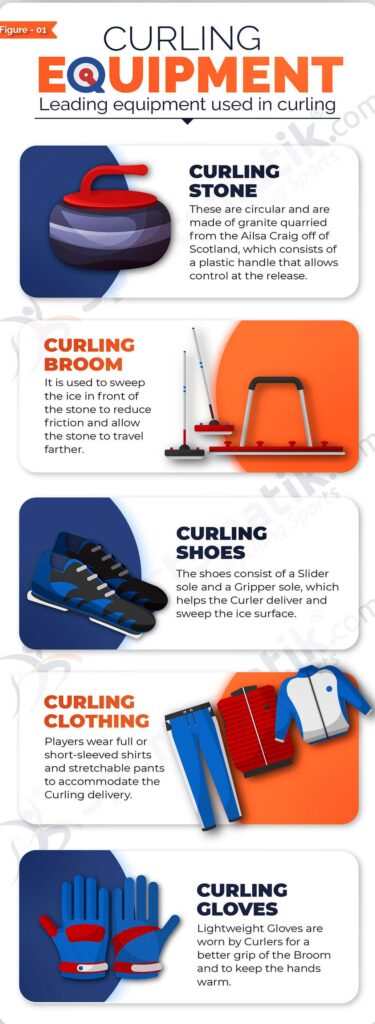Delve into the origins, rules, major tournaments, and popularity of curling. Uncover this winter sport that has enthralled fans worldwide!
Sweeping Through History: Exploring the Fascinating World of Curling
Contents
Introduction
In the realm of winter sports, few capture the imagination and strategic finesse quite like curling. As you watch the players gracefully slide down the ice, shouting instructions and meticulously sweeping the path, it’s easy to become enthralled by the mesmerizing dance on ice. To truly appreciate the sport, it’s essential to delve into its origins, understand the rules that govern it, explore the major tournaments that define its competitive landscape, and examine its popularity around the world.
Curling Origins
The roots of curling can be traced back to the icy landscapes of medieval Scotland. The earliest evidence of the sport dates back to the 16th century when stones were used to slide across frozen lochs and ponds. Over time, curling evolved from a casual outdoor pastime to a dedicated ice sport played on specially prepared surfaces. The first official curling club, the Grand Caledonian Curling Club, was formed in Scotland in 1838, cementing the nation’s place as the birthplace of modern curling.
As Scottish immigrants settled in North America, they brought their beloved sport with them. Curling quickly gained popularity in countries like Canada, where it became deeply ingrained in the culture. Today, curling associations exist worldwide, and the sport continues to captivate players and spectators across the globe.
Understanding Curling Rules and Gameplay
Curling is a game that combines precision, strategy, and teamwork. Played on a rectangular sheet of ice, the objective is to slide granite stones, known as curling stones or rocks, toward a target area called the house. Each team consists of four players who take turns delivering their stones and sweeping the ice to influence the stone’s speed and direction.
To ensure fair play, curling equipment and the playing surface must meet specific standards. The stones weigh approximately 42 pounds (19.1 kilograms) and have handles for easy gripping. The ice sheet is carefully prepared, with markings such as the hog lines and the hack indicating zones for play. Curling brooms are used for sweeping the ice, which heats it slightly, reducing friction and affecting the stone’s trajectory.
The game revolves around scoring points based on stone placement. The team with the stone closest to the center of the house, or the tee, at the end of each round scores a point for each stone closer to the tee than any of the opponent’s stones. This strategic aspect of curling makes every shot and decision crucial, requiring players to carefully consider angles, weight, and ice conditions.
Each member of a curling team has a specific role. The skip acts as the team captain, directing gameplay and making strategic decisions. The vice-skip supports the skip and delivers crucial shots. The second and lead players deliver stones and perform sweeping duties. In high-level competitions, an alternate may be present to replace an injured or ill team member.

Major Curling Tournaments
The pinnacle of curling competition lies in the major tournaments that attract teams from around the world. The Winter Olympics, since the sport’s official inclusion in 1998, showcases curling’s finest athletes. Both men’s and women’s tournaments captivate audiences with their displays of skill, strategy, and sportsmanship. Memorable Olympic moments, such as the “Miracle on Ice” in 2018 when the United States women’s team secured an unexpected gold medal, have cemented curling’s place in Olympic history.
The World Curling Championships, held annually, feature national teams battling for glory. With different formats and divisions, these championships offer a platform for both established curling nations and emerging contenders to showcase their prowess. Legends like Sweden’s Anette Norberg and Canada’s Kevin Martin have left an indelible mark on the history of the sport, captivating fans with their skillful play and strategic genius.
Beyond the Olympics and World Championships, curling enthusiasts eagerly follow continental and national championships. The European Curling Championships showcase the best teams from Europe, with powerhouses like Sweden, Scotland, and Switzerland vying for supremacy. The Pacific-Asia Curling Championships provide a stage for nations like South Korea and China to exhibit their growing prowess in the sport. Meanwhile, Canada, the United States, and other nations host their own national championships, which serve as crucial stepping stones for teams aspiring to compete on the global stage.
Curling’s Popularity Across the World
While curling holds deep roots in its traditional strongholds of Scotland and Canada, its popularity has extended far beyond these boundaries. Canada’s unwavering passion for the sport is evident in the countless curling clubs and dedicated fans who flock to arenas to witness their favorite teams in action. In Scotland, where it all began, curling remains an integral part of the nation’s heritage, with clubs boasting centuries-old traditions.
However, curling has also made significant strides in new frontiers. The United States, long dominated by sports like basketball and football, has seen a surge in interest in curling, fueled by televised coverage of major tournaments and the sport’s accessibility to all ages and skill levels. As a result, the United States Curling Association has experienced steady growth and has produced competitive teams that have made their mark on the international stage.
Asia has emerged as a hotbed of curling enthusiasm, particularly in South Korea and China. South Korea’s women’s team, led by the charismatic skip Kim Eun-jung, captured the world’s attention with their silver medal performance in the 2018 Winter Olympics. China, too, has invested in the sport, hosting major tournaments and developing a new generation of talented curlers.
In Europe, curling’s popularity has spread beyond Scotland to countries like Switzerland, Norway, and Sweden, which have become forces to be reckoned with in international competitions. The sport’s accessibility, social nature, and ability to foster camaraderie have contributed to its broader appeal, attracting individuals who are seeking an engaging and inclusive winter activity.
Television and digital media have played a pivotal role in curling’s growing popularity. Broadcast coverage of major tournaments has brought the sport into living rooms around the world, allowing viewers to appreciate the strategic nuances and captivating moments that unfold on the ice. Online platforms and social media have further connected fans, players, and curling enthusiasts, fostering a vibrant global community that shares in the excitement and discussion surrounding the sport.
Conclusion
Curling, with its intriguing origins, intricate rules, and captivating tournaments, has carved out a unique place in the realm of winter sports. From its humble beginnings on frozen Scottish ponds to its present-day status as a global phenomenon, curling has enraptured both players and fans alike. As the sport continues to evolve and grow, its accessibility, strategic depth, and social appeal ensure that its popularity will endure. So, whether you’re a seasoned curler or a curious observer, take the opportunity to embrace the sweeping excitement of curling and witness the beauty and precision of this mesmerizing sport on ice.
- Loot Boxes in Video Games - May 15, 2024
- Super Yankee Bet: What Is It and How Does It Work? - May 10, 2024
- Super Heinz Betting Explained - April 22, 2024




